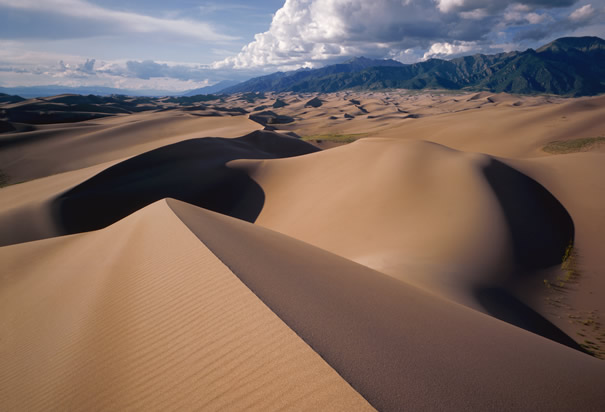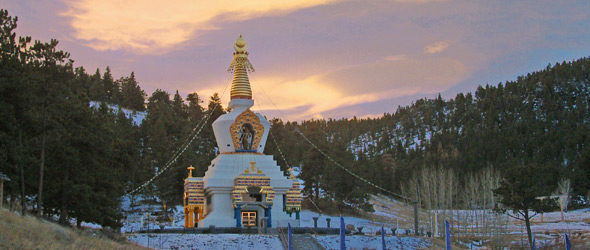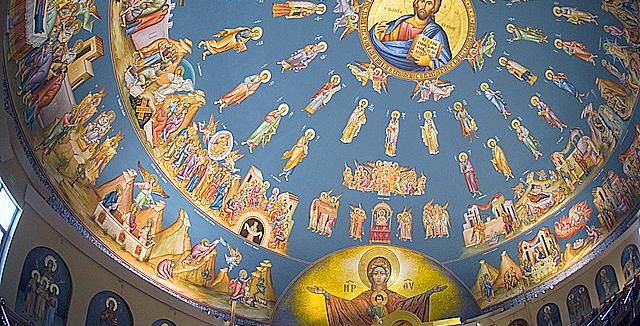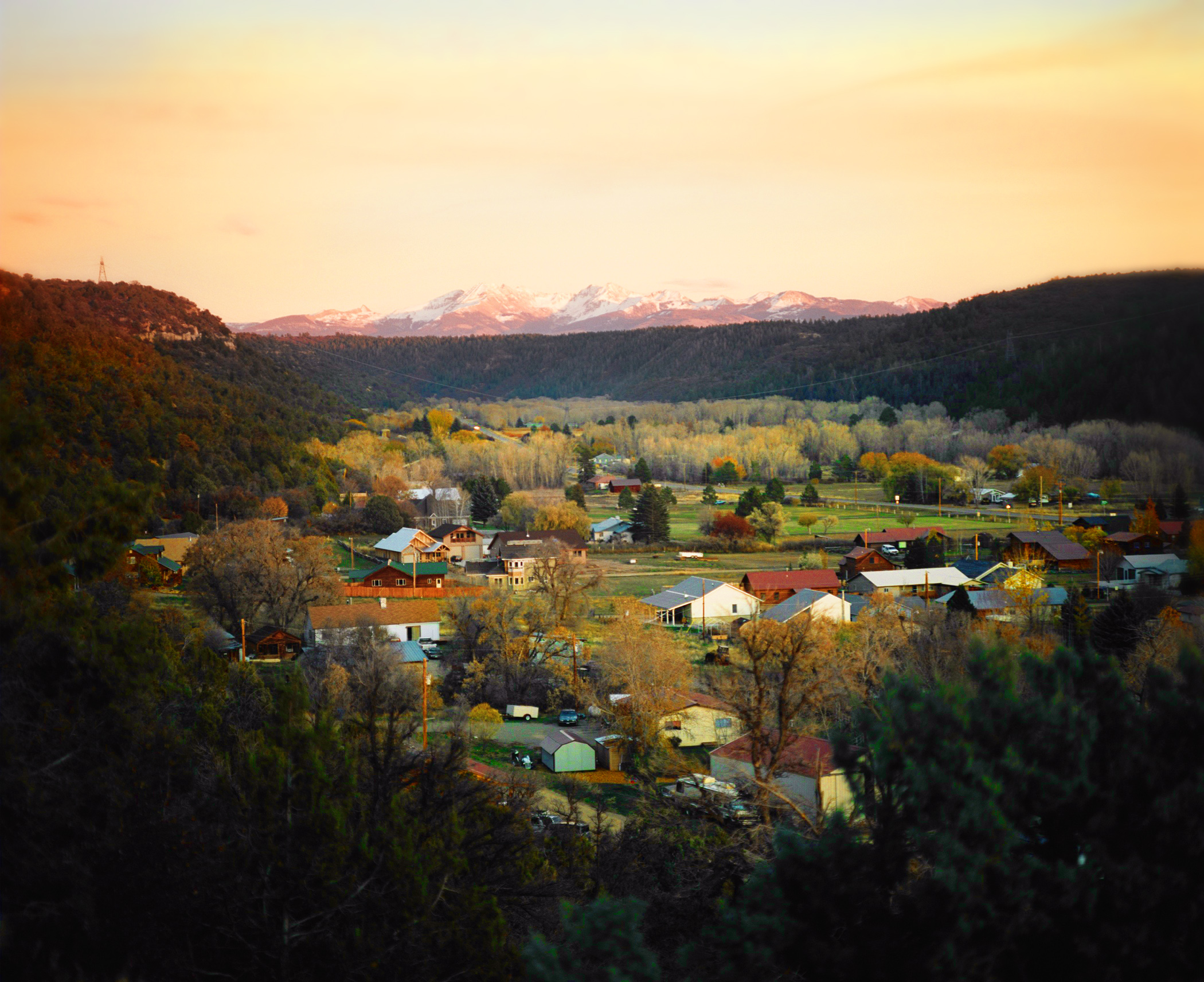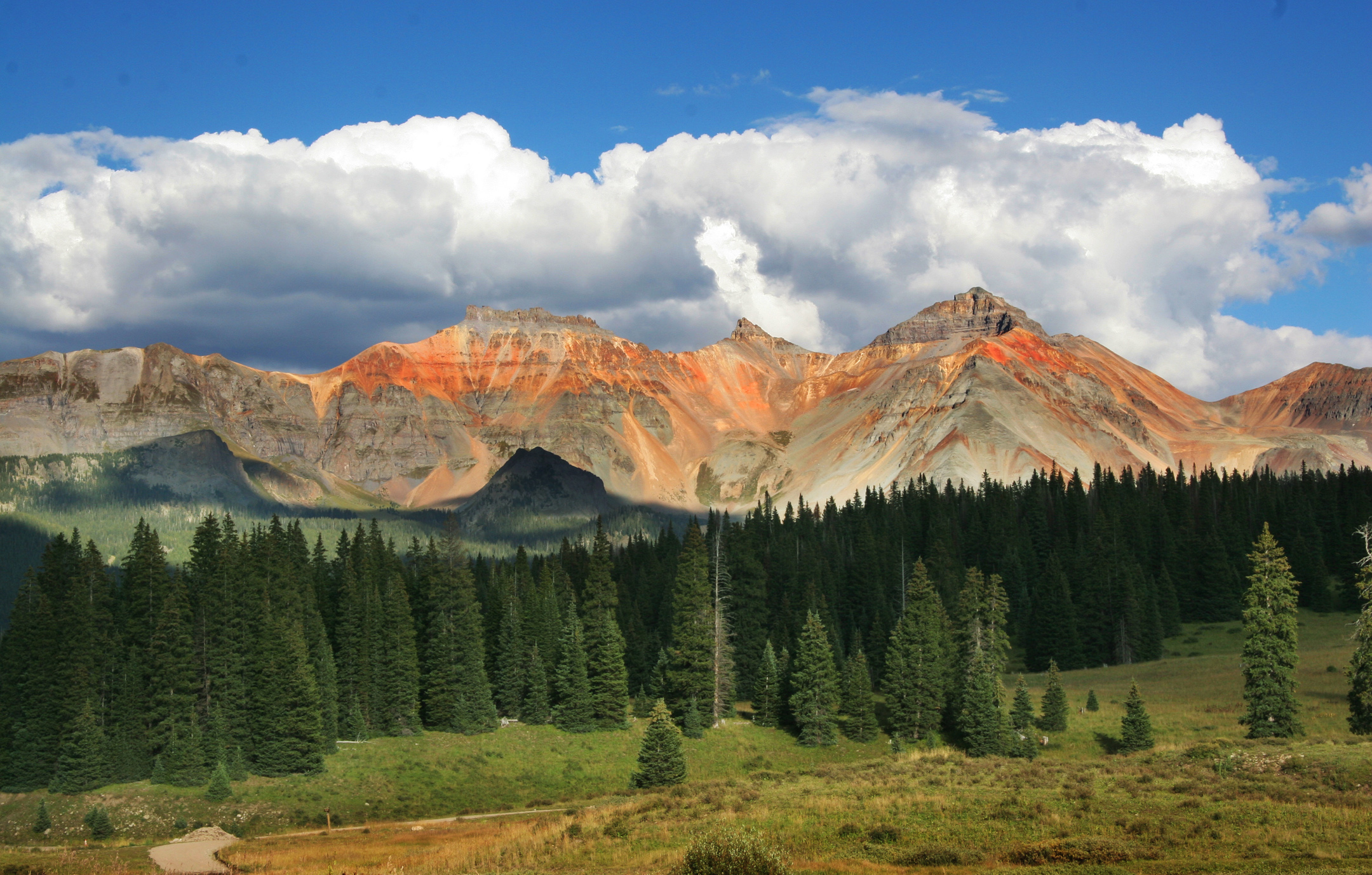
It is not so much that a place heals us—it is our reaction to the place that heals us.”
-J.Z. Knight
Have you recently thought to yourself, ‘There has to be more to life than this?’ Well, that is an important question, and not because of any particular answer, but because of the journey that this question will embark your spirit upon. Across the gambit of cubicles, track housing, and television reality shows, many of us have forgotten what a treasure trove of spiritual awakening awaits outside of your manicured urban landscapes. “There is a restorative essence in nature that causes us to look at life, and discover why it is a privilege to be alive,” suggests J.Z. Knight, mystic, teacher (Ramtha’s School of Enlightenment), author, and expert in the 2004 film, What the Bleep Do We Know?
“The best experiences are found in nature,” agrees Joshua Mulder, architect of the Great Stupa of Dharmakaya, located in Northern Colorado. “It is in the unconditioned space of the mind that nature reflects back to you.” Many of our favorite spiritual gurus consider life to be grounded in our personal relationships with nature. Even scorpion-eating survivalists like Bear Grylls understand the spiritual importance of spending quality time in nature.
The problem with this discovery is that this process often collides with the American social work ethic, which describes life fulfillment as simply hard work, and diligence, followed by four weeks of paid vacation. And let’s not forget about social media’s effort to convince us that life should consist of trending posts, great sex, and six-pack abs. However, once you push these voices out of your head, and find a quiet spot where you can contemplate the natural wonders that surround you, suddenly a deeper understanding of life settles into your conscience.
Yes, we’re talking about Mother Natures’ own guide to developing and mastering mindfulness. For those of you who are ready to drop down into this rabbit hole of healing and spiritual awakening, we offer six, sacred, Colorado destinations, dedicated to the realization that living should mean more than just having a pulse or fogging a mirror.
Earth and Wind
The Great Sand Dunes
In biblical scripture, the desert is a wasteland leading to the garden of promise. Parts of the Great Sand Dunes, located in Southern Colorado, are about as barren as you’ll find in the sunshine state. However, you might ask what is so inspiring about walking across bits of earth and prehistoric mammoth and bison bone? If you can learn to appreciate isolation, you will eventually understand that it is the mind’s interconnection with nature that invigorates the heart and spirit. Nowhere in Colorado can you achieve the kind of harmony where you can sit and be in the moment, than right here in the Great Sand Dunes National Park.
The Great Stupa of Dharmakaya
The greatest spiritual destinations in the world are often located among the highest elevations, where you can visualize just how small we really are in the grand scheme of things. “I have found that in the mountains, the consciousness of nature is more profound for cleansing and getting in touch with ourselves,” says Knight. The Great Stupa of Dharmakaya is located in the Red Feather Lakes area of Northern Colorado and nestled within the boundaries is a 600-acre retreat center known as the Drala Mountain Center. This is one of the premier meditation and Buddhist retreats in Colorado.
“We are still working on it,” says architect, Joshua Mulder, who’s been involved with the project for the past 24 years. It may appear as if the real accomplishment of this 6,400,000 pound, 108-foot structure, is its realistic aspiration to survive the next 1,000 years. However, its single purpose has always been to promote wisdom, harmony, prosperity, peace, and awaken compassion in everyone who visits. “We also have a Shinto Shrine located behind the stupa, honoring the sun goddess of the indigenous Shinto religion of Japan,” says Mulder. “[Many] summers ago I started working on a poetry garden as a monument to Allen Ginsberg, who was a member of this Buddhist community.”
Fire and Water
The Land of the Sun
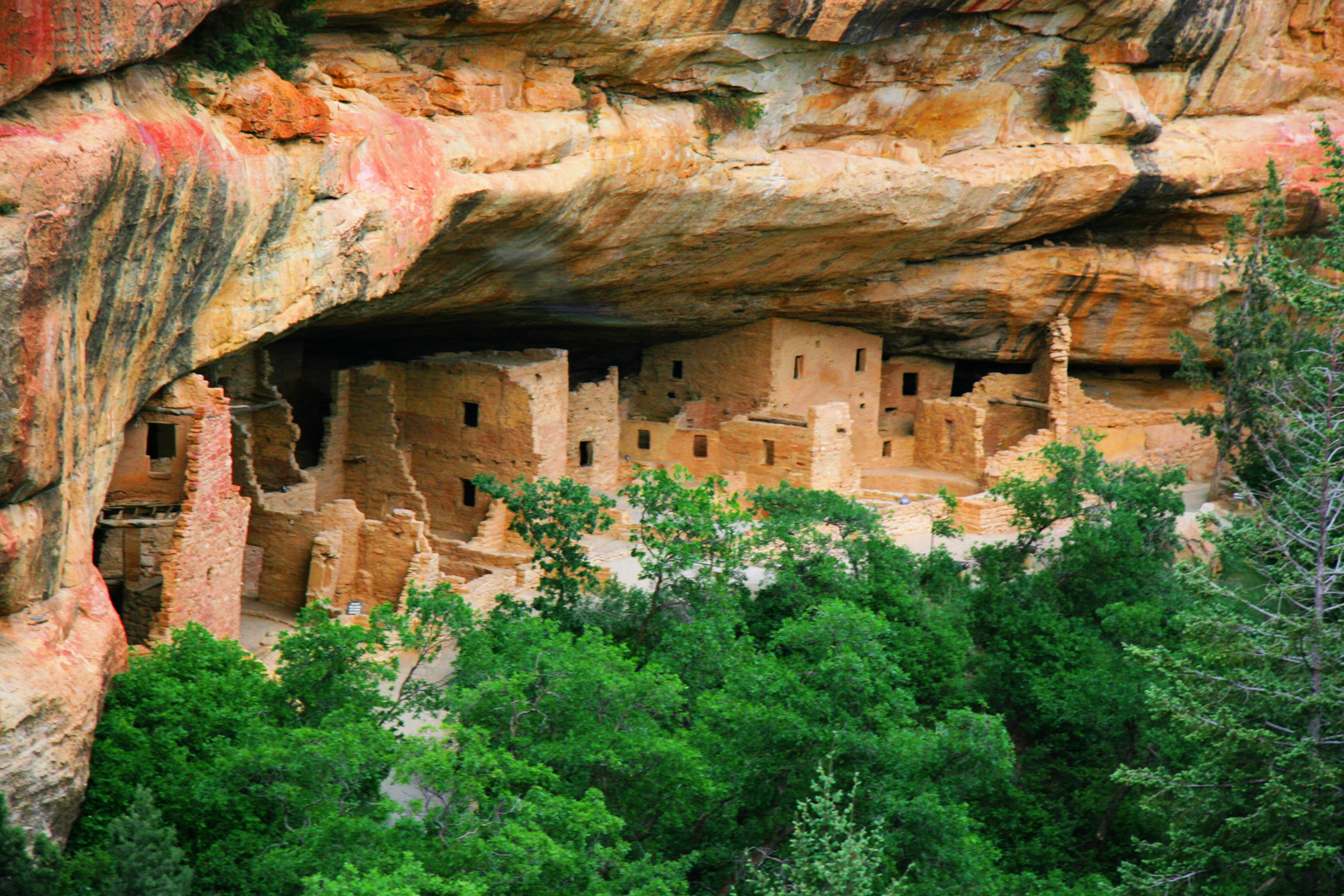
The masculine energy of fire brings devastation, mayhem, and death. But from this destruction, soon follows fertility, creation, and rebirth. The Ute Indians named themselves after their homeland, which they described as the land of the sun. “You can go to Ute Mountain Tribal Park, and have native Americans bring you to ancient kivas (chambers used for religious practice), where you can experience the ritual process of their ancestors,” explains Meira Leonard, manager of the Sophia Peace Center, located within the spiritual vortex of the four corner’s area and developed in association with National Geographic. “This is not just about tourism, but understanding what it means to connect with the earth and spirit.”
Not far from the Tribal Park lies another landmark of spiritual awakening, located along the cliffs of the Mesa Verde. “We have a group that performs spiritual rituals at the top of the Mesa Verde at sunrise,” says Leonard. “They say they can sense the history and appreciation of their ancestors, through a retrospection and acknowledgment of their presence.”
The Assumption Orthodox Cathedral
Along East Alameda Avenue in Denver, there is a golden dome located on a hill overlooking the surrounding community, and peaking out above the city landscape, beckoning for your awareness. What you will find hidden beneath this golden cap is a magnificent spin on traditional architecture and old-world artistry. Upon entering the doors to the cathedral, your eyes will be treated to a colorful pictorial of the various saints, gospel, and depictions of heaven. “I visited the Greek Orthodox church during its construction,” confesses Mulder. “While I can’t comment on its practice, I can say the building was quite amazing.”
The Dolores River
Water weaves all life upon this planet into one collective garden. It washes our wounds, releases our sadness, and cleanses our sins. “Sitting alone at the ocean (water)—offers an open-ended consciousness of renewal,” describes Knight. “What is left, is not the worry you are bracing yourself against, but the thoughts of healing that revitalize you.” El Rio de Nuestra Senora de Dolores (“River of Our Lady of Sorrows”), was named in dedication to the Mother Mary. The Dolores is proof that not only is the surrounding landscape of Colorado blessed by the ancestors of Native Americans, but also two Spanish Catholic priests en route to California in 1776.
The Divine Self
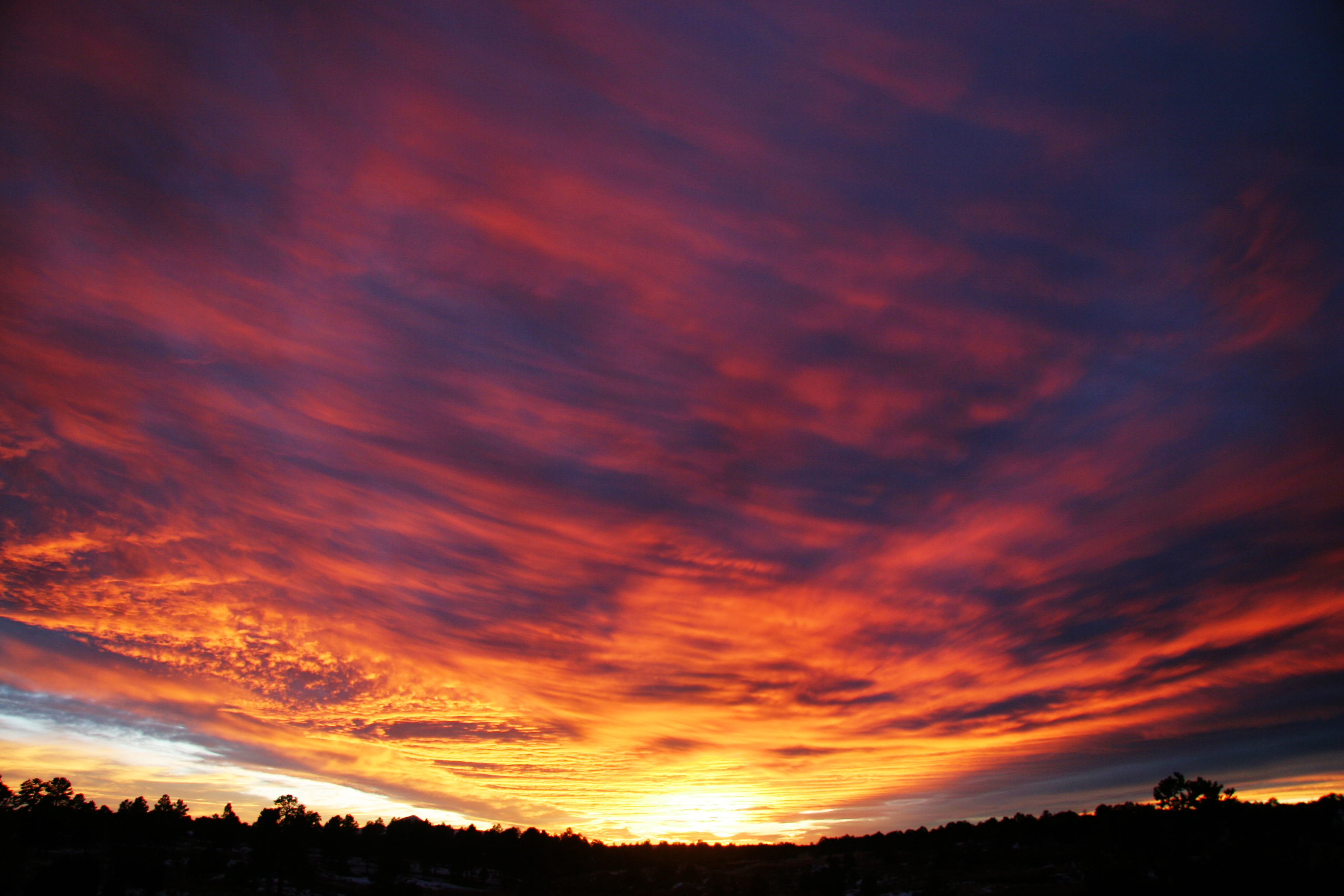
Spiritual gurus speak of the four elements of life as the root of all existence. This includes the elements of earth, water, fire, and air. However, many pagan traditionalists also believe in a fifth element, known as the human spirit or divine self. “I think the most sacred spot is inside of ourselves, in a moment of spiritual tranquility,” says Knight. “It can be in the backyard as the sun is going down—It can be during a chaotic time at work, waiting at the airport—and believe (you) me—it can even be done on the way to the bathroom.”
It doesn’t matter what you’re wearing—it doesn’t matter what you look like. What matters is that you care enough to ask the great questions inside of yourself. We have the ability to contact our own inner hero, our own awareness, and be our own greatest defender. Every human being is a blessed being—We only need to be told that…”
—J.Z. Knight
More Travel
Colorado’s Greatest Road Trips
Best Golf Resorts You Can Play in the Winter
The Ultimate Guide to Las Vegas
The Ultimate Guide to Miami
Man’s Greatest Travel Destinations
Also, see our Guide to British Columbia.
About Dr. Eric J. Leech
Eric has written for over a decade. Then one day he created Urbasm.com, a site for every guy.
